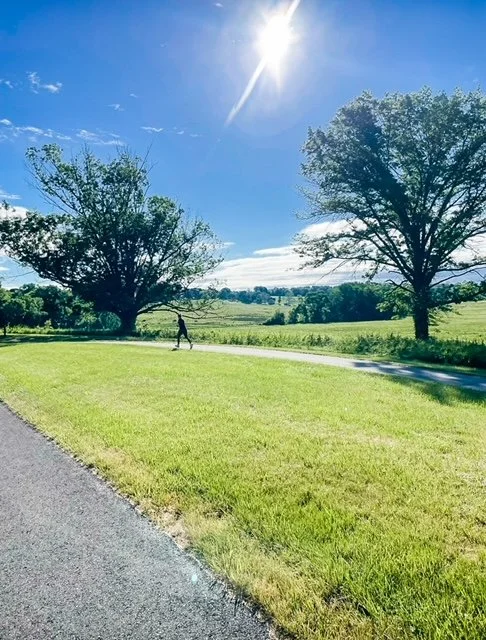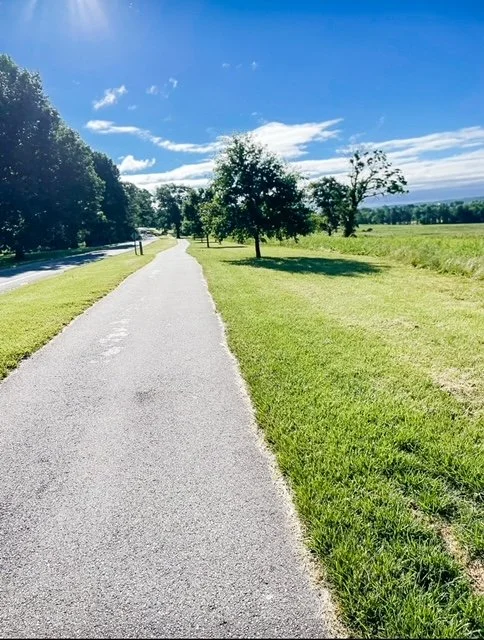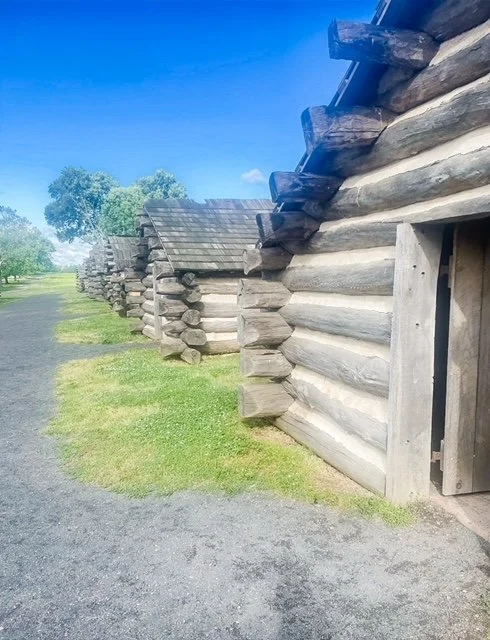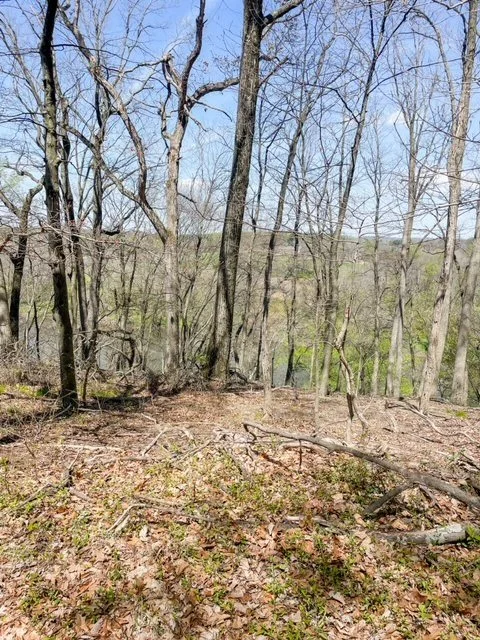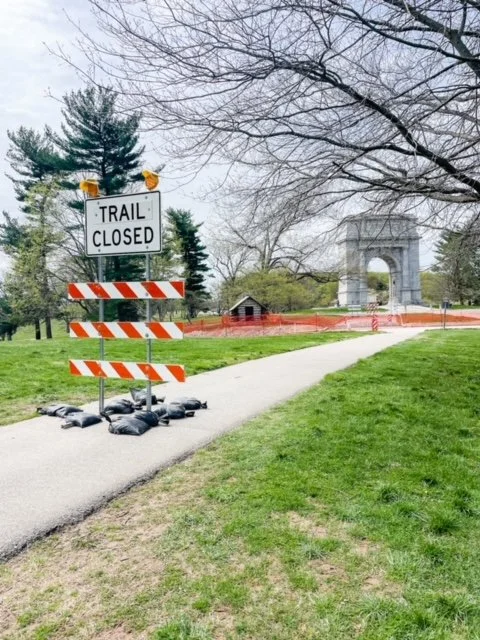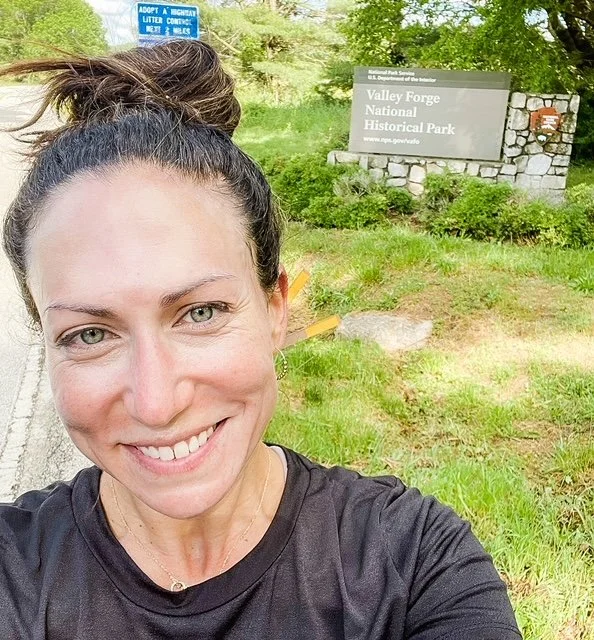You Don’t Need to Be a Tourist to Frequent Valley Forge National Historical Park
One of my all time favorite places to run is at Valley Forge National Historical Park. This park is so rich in history and abundant in activity space that the task to blog about it just seemed too great to me for so long. But it has come to my attention that many Main Line residents have never even been to this park or don’t take advantage of the fact that it’s in our backyard! The goal of this post is to make the park less overwhelming and more accessible so that more people will frequent this stunning and fascinating national treasure more regularly.
Valley Forge is a place of “commemoration, inspiration, refuge and pleasure.” Numerous natural features like creeks, meadows, forests, ponds and wetlands cover the park and support extensive plant and animal life. There is something for everyone— Whether you are there to take in some history, bask in the exquisite scenery or participate in the park’s many guided tours. For me, I use the park to run. But, there is always something to observe, always something to ponder, always something to appreciate there, no matter what your purpose may be.
The 3500 acres that make up Valley Forge National Park are filled with numerous trails for running, walking, biking, hiking, boating or horseback riding. (There are 35 miles of designated hiking trails in the park; 19 miles of biking trails; and 17 miles of horse trails— so if running isn’t your thing, Valley Forge really does have something for everyone. This map is helpful to see which trails permit what activities).
My favorite way to tour Valley Forge National Park is to go for a longer, more challenging run. The trail I typically use, and the most popular one for runners or walkers, is the Joseph Plumb Martin Trail. The “inner trail” is a five mile loop and is pretty hilly. So it never feels like the 5 miles that I do on the Radnor Trail. Almost all of the 9 free parking lots throughout the park access this trail but I typically park under the National Memorial Arch. (My regular route to this lot is currently closed for construction so be sure to check updates on the various renovation projects happening at the park this spring and summer).
The paved path of the Joseph Plumb Martin Trail follows the Encampment Tour route, which includes many of the park’s historic sites, such as Varnum’s Quarter’s, the Washington Memorial Chapel, the Artillery Park, the Wayne Statute and the National Memorial Arch. The reconstructed log huts scattered throughout the park give you a glimpse into the 4th largest city in our country at that time and that was built to house the soldiers and their families during the winter of 1778.
There is something new to discover every time I run at Valley Forge Park (and I go there a lot). I usually run past the historical information signs but at times, something will catch my eye and I will stop to give a read or try to imagine what happened in that exact spot. Because of that, this historical trail makes for an engrossing and educational run. Plus, it gives me fun facts to discuss with my Hamilton obsessed 11-year-old. Check out the nine designated timeline markers here.
I like to use the Joseph Plumb Martin Trail because it’s pretty populated most times of the day. It is very open without much shade so I prefer to go there during the early daytime hours and during the mild temperature months of the fall and spring. The winter months at Valley Forge can be brutally windy and cold. It’s hard to imagine how more than 12,000 soldiers and 400 women and children stayed out there during the winter of 1778.
I also love to frequent Valley Forge when the trees are changing because the views are absolutely breathtaking. There is nothing like pulling into the park for a brisk fall morning run when the sun is rising behind the gold and orange trees bordering the the park’s entrance, and the fog is lifting off the stretches of surrounding meadows. I have to catch my breath sometimes as I take it all in … and it’s not just because of those hills.
For water views, the Chapel Trail offers a different pedestrian experience. For one, the trail is unpaved so you do have to keep an eye on your feet (at least, my clumsy self does).
Trees surround the path so it’s better for hot days, except for the fact that it’s not very populated, and I would not feel comfortable running this trail alone. The 2.5 miles making up the trail are a straight shot so it’s good for a 5 mile there and back run. It’s less hilly than the Joseph Plumb Martin Trail but there are steep sections overlooking the Schuylkill River. The best places to park to pick up the Chapel Trail are at Washington Headquarters or at the other trail entrance next to the Washington Memorial Chapel (which just reopened after being closed for renovations). Currently, and throughout the summer, there are many temporary road and parking lot closures due to a major road renovation project. This timeline should help you plan your visit.
The park is open year round from dawn till dusk. There are several ways to access the park. I never realized quite how many entrances there were until I held my first run club there and we waited in the parking lot for a fellow runner who was lost in another section of the park, looking for our lot and her GPS told her she was a 10 minute drive from us! There are bathrooms at many of the Encampment Tour spots along the Joseph Plumb Trail.
Every spring for the past 15 years, the Valley Forge National Historical Park hosts the Revolutionary Run. The 5 mile run/3 mile walk encourages participants to enjoy the park and support the park. All proceeds from the race go back to the keeping the park clean, safe and beautiful for us all to take advantage of. This year, the run was held on April 24.
The United States National Park Service put together the “78 Mile Challenge” at Valley Forge. Log 78 miles in at Valley Forge running, walking, hiking, paddling or exploring this historical treasure from April through October and you will get a prize. The 78 miles commemorate the year 1778, when George Washington and his men were camped at the park for six months during the Revolutionary War. I already started to track my mileage at the park for the 78 Mile Challenge. Join me! Learn how to participate here.
Often when you have something so spectacular so close, you don’t visit it nearly enough. While I run at the park regularly, I had never even been inside of the park’s Visitor Center until I was doing research for this post! You don’t have to be a tourist to take advantage of all our area has to offer, especially Valley Forge National Historical Park. If you live on the Main Line or any of the Philadelphia area suburbs, go check out Valley Forge National Historical Park and make this awe-inspiring place part of your regular routine.


